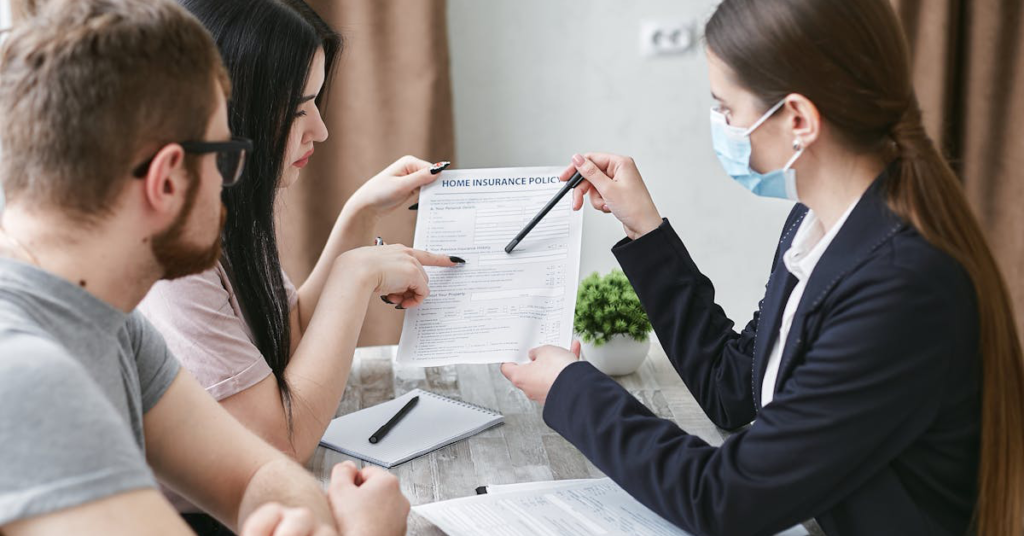Homeowners insurance is a safety net for your home and belongings when life throws unexpected challenges your way. It helps cover repair costs from damage caused by events like fire, windstorms, and lightning. It can even assist with legal or medical bills if someone is hurt on your property. Here’s a simple breakdown of what this essential coverage includes and why it’s so valuable.
What Does Homeowners Insurance Cover?
The coverage offered by a standard homeowners insurance policy depends on the type of policy you choose. However, most policies include protection for your home, belongings, and liability for accidental damages or injuries caused to others.
1. Dwelling Coverage
This coverage focuses on your house and any permanently attached structures, like a garage or deck. It helps pay for repairs or rebuilding if your home is damaged by covered events, such as fire, hail, or lightning.
Example: A severe storm uproots a tree that crashes through your roof. Dwelling coverage can help pay for roof repairs and tree removal.
2. Other Structures Coverage
Structures on your property but not attached to your home—like a fence, shed, or detached garage—are protected under this coverage.
Example: A heavy snowfall causes your toolshed to collapse. This coverage can help pay for the repairs.

3. Personal Property Coverage
If your belongings are stolen, destroyed, or damaged, personal property coverage can help repair or replace them.
Example: Burglars break into your home and steal electronics, jewelry, and a bicycle. Personal property coverage can help cover the replacement cost.
4. Loss of Use Coverage
Also known as additional living expenses coverage, this helps cover the cost of temporary housing if your home becomes uninhabitable due to a covered event.
Example: A kitchen fire leaves your home unlivable. Loss of use coverage can help pay for a temporary rental or hotel, along with other extra expenses like meals and transportation.
5. Personal Liability Coverage
This coverage steps in if you’re responsible for accidentally causing injury to someone or damaging their property.
Examples:
- Your child hits a ball through a neighbor’s window. Liability coverage can pay for the repairs.
- A guest slips on your icy steps and sues for medical expenses. Liability coverage can help cover medical and legal costs.
6. Medical Payments to Others
If someone outside your household is injured on your property, this coverage helps with their medical bills, regardless of fault.
Example: A neighbor’s child breaks their arm while playing in your yard. Medical payments coverage can assist with emergency room costs.
Optional Coverages You Might Need
In addition to standard protections, you can customize your policy with optional coverages that address specific needs.
Water Backup and Sump Overflow Coverage
Helps pay for damages caused by water backup from drains or sump pump overflow.
Example: A sudden storm causes sewer water to back up into your basement, damaging the flooring and appliances. This optional coverage can cover the repair costs.
Extended or Guaranteed Replacement Cost Coverage
When construction costs rise unexpectedly, this coverage ensures your home can be rebuilt even if repair costs exceed your policy’s limits.
Example: A widespread disaster drives up construction costs. This coverage bridges the gap between your policy limit and actual rebuilding expenses.
Valuable Items Coverage
This optional coverage increases the limit for high-value items like jewelry, artwork, or collectibles.
Example: You inherit a priceless painting and want it fully insured. Valuable items coverage ensures its protection.
Identity Fraud Expense Coverage
Reimburses expenses associated with restoring your identity after fraud.
Example: After an online security breach, you spend time and money recovering your identity and credit. This coverage helps with those costs.
Matching Undamaged Property Coverage
Covers the cost of ensuring repaired or replaced property matches undamaged parts of your home.
Example: A storm damages part of your home’s siding, but the replacement doesn’t match the original. This coverage ensures uniformity.
Residence Glass Coverage
Waives the deductible for glass replacement, like windows or sliding doors, if accidentally broken.
Example: A stray baseball shatters a patio door. This coverage helps cover the replacement cost without a deductible.
What Risks Are Typically Covered?
Most standard homeowners insurance policies cover damage caused by these events (called “perils”):
- Fire and smoke
- Wind and hail
- Lightning strikes
- Theft and vandalism
- Explosions
- Falling objects
- The weight of snow or ice
What Isn’t Covered?
Certain risks, such as flooding and earthquakes, aren’t covered by standard policies. You’ll need separate policies for these events. Other common exclusions include:
- Wear and tear
- Pest infestations
- Neglect or poor maintenance
- Mold (in most cases)
- Intentional damage
Why Homeowners Insurance is Essential
While homeowners insurance isn’t required by law, it’s often mandatory if you have a mortgage. Even if it’s not required, having insurance can protect you from significant financial losses. Imagine rebuilding your home after a fire or replacing all your belongings after a burglary—those costs can quickly add up.
Protect What Matters Most
Understanding your homeowners insurance policy ensures you’re covered for the unexpected while avoiding unnecessary surprises. To tailor a policy to your needs, consider your home’s value, your belongings, and the risks you’re most concerned about.
Start by talking to an agent who can guide you through the process and help you choose the right coverage for your peace of mind.
Read more – Homeowners Insurance Made Simple: Protect Your Home and Peace of Mind Today!